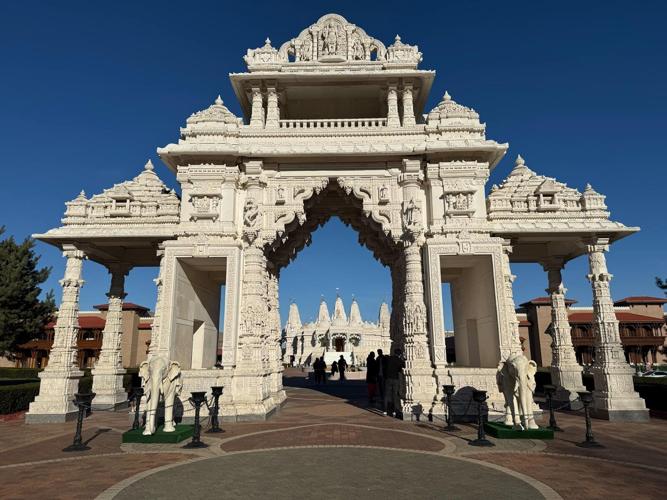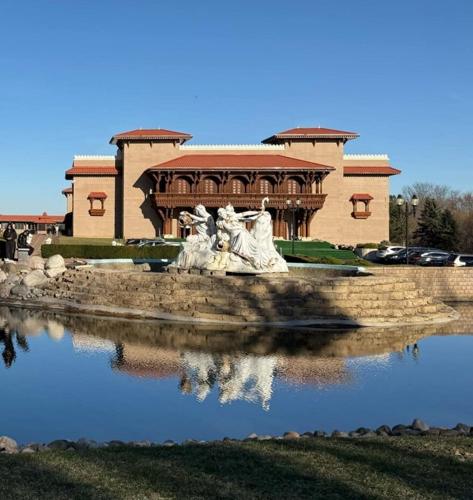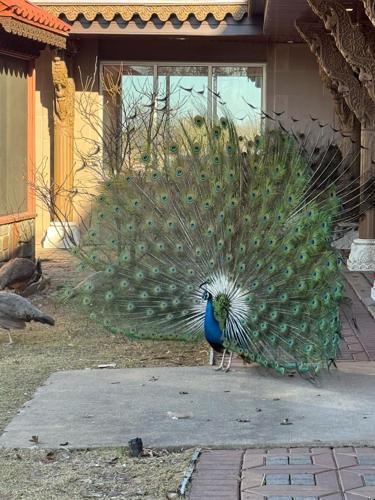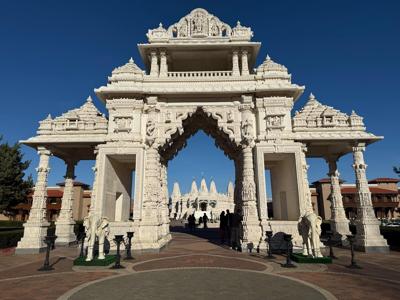The BAPS Center in Bartlett is more than just a Hindu community worship place. It is an oasis of faith, culture, and community. People from all walks of life come together to pray, bond, share their experiences, and learn. The Hindu temple has become a space where individuals of all backgrounds find connection, purpose, and a sense of belonging. This center serves as a beacon for spiritual growth and community engagement.
BAPS (Bochasanwasi Akshar Purushottam Swaminarayan Sanstha) was founded in 1907 by Shastriji Maharaj. It is part of the Swaminarayan tradition, worshiping Lord Swaminarayan as the Supreme God. Focused on devotion, spiritual growth, and community service, BAPS expanded globally under Yogiji Maharaj, with Bartlett becoming a central hub for its growing community in the Chicago area and beyond.
In 1972, six devotees of the Swaminarayan faith were practicing its principles in Chicago. The support and guidance of spiritual leader Pramukh Swami Maharaj attracted more worshippers to the Chicagoland area, necessitating a larger facility.
BAPS chose Bartlett for its new temple because its strategic location offered a peaceful environment for spiritual activities and easy access to the greater Chicagoland area. The 39-acre site provided room for growth, allowing BAPS to expand and create dedicated spaces for worship, community gatherings, and cultural events.
The campus includes the Haveli, a hub for community activities, cultural events, and religious gatherings. It also serves as a welcome center, providing information and offering campus tours. Recently, a dining hall, gift shop, and traditional Indian cafeteria opened, all staffed by volunteers.

Haveli.Photo courtesy of Michaela Wilson
The campus also features a Mandir, an ornate Hindu temple dedicated to worship. Devotees gather for prayer, meditation, and ceremonies, surrounded by craftsmanship, intricate carvings, and serene altars.

Mandir. Photo courtesy of Michaela Wilson
The Mandir also houses 11 Murtis or idols of deities, which are placed in a dedicated altar, reflecting their unique significance. They are made to embody the divine form of the god, goddess, or saint they represent. They are considered sacred symbols and treated with great respect and reverence. Their presence is at the heart of the temple’s design, with every element carefully crafted and dedicated throughout the detailed and spiritual building process.

Ram, Sita, Laxman Murtis. Photo courtesy of Wikimedia Commons
Describing the construction of the Bartlett BAPS campus as an engineering feat barely scratches the surface. Exquisite materials, such as Carrara marble from Italy and Turkish limestone from Burdur, were meticulously carved and carefully shipped to their destinations.
Skilled artisans from Rajasthan, India, hand-carved each piece using traditional methods, with over 3,000 craftsmen spending 22 months on the work. The pieces were polished, numbered, and packed for shipment. After a three-month journey, they were assembled by 1,700 volunteers who dedicated 2.5 million hours. Construction began in November 1999 and was completed in 2004.

Intricate carvings of Mandir walls. Photo courtesy of Michaela Wilson
Visitors are also captivated by peacocks, which roam the grounds and add to the site's beauty. The peacock is a symbol of Lord Krishna, who is frequently depicted with a peacock feather in his crown, symbolizing purity, wisdom, and protection. This blend of culture and natural beauty is a fine chance to connect with something greater.

Photo courtesy of Michaela Wilson
Visitors are always welcome to explore the temple, learn about its rich history, and gain insight into the Swaminarayan tradition. All are invited to join in devotions and prayer, sharing the spirit of peace and unity that the temple fosters.
For information, follow the link.














(0) comments
Welcome to the discussion.
Log In
Keep it Clean. Please avoid obscene, vulgar, lewd, racist or sexually-oriented language.
PLEASE TURN OFF YOUR CAPS LOCK.
Don't Threaten. Threats of harming another person will not be tolerated.
Be Truthful. Don't knowingly lie about anyone or anything.
Be Nice. No racism, sexism or any sort of -ism that is degrading to another person.
Be Proactive. Use the 'Report' link on each comment to let us know of abusive posts.
Share with Us. We'd love to hear eyewitness accounts, the history behind an article.